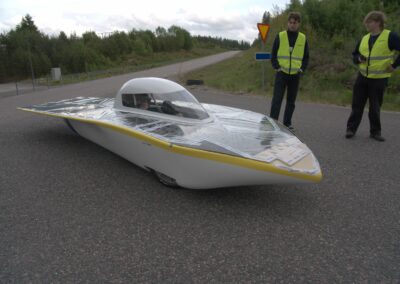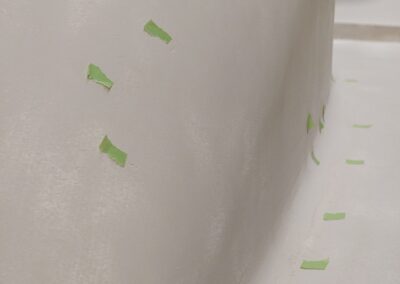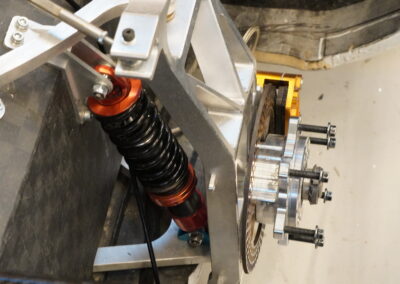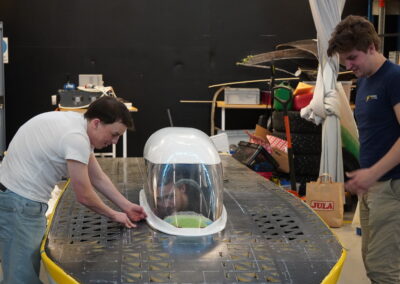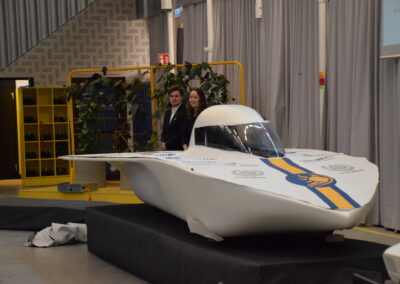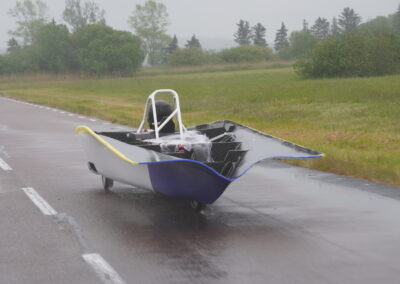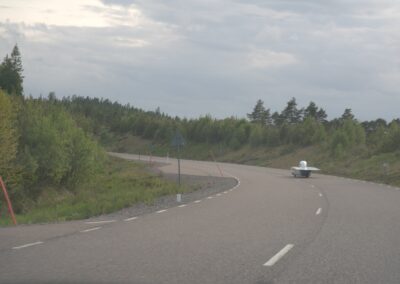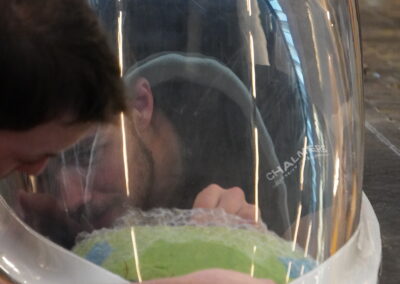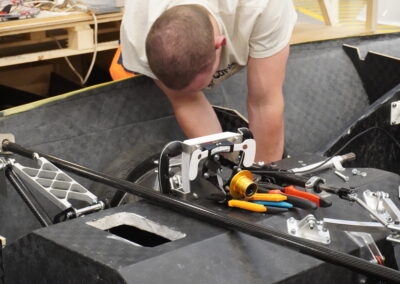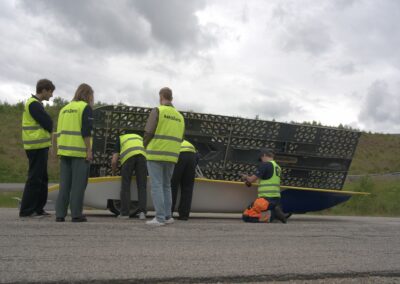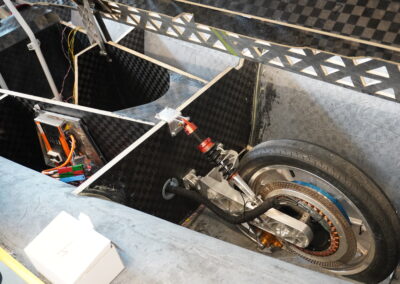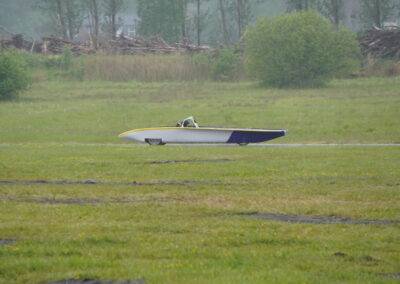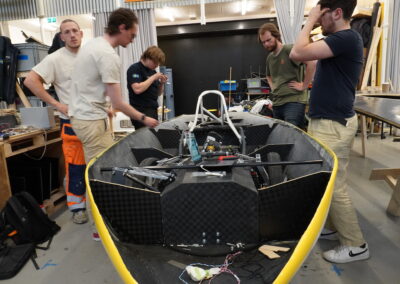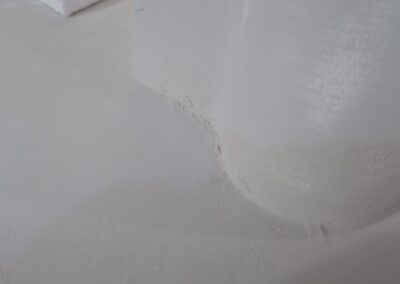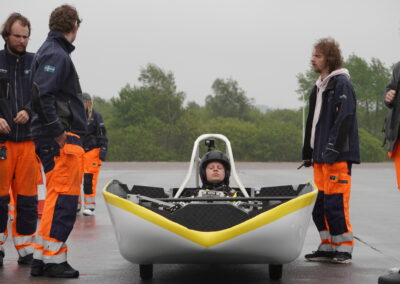Arvaker
Arvaker is our fourth solar car. The name is derived from Norse mythology, being one of the horses pulling the carriage of the Sun. As companion to Allsvinn, our previous solar car, Arvaker continues the journey, building on its Foundation. While Allsvinn emphasized speed, Arvaker focuses on endurance and efficiency.
Quick Facts
-
Carbon and glass fibre aeroshell
- Fully carbon tub, with docol hoop
-
3 wheel tadpole design
-
3kWh Li-Ion Battery
-
6 m2 solar cells
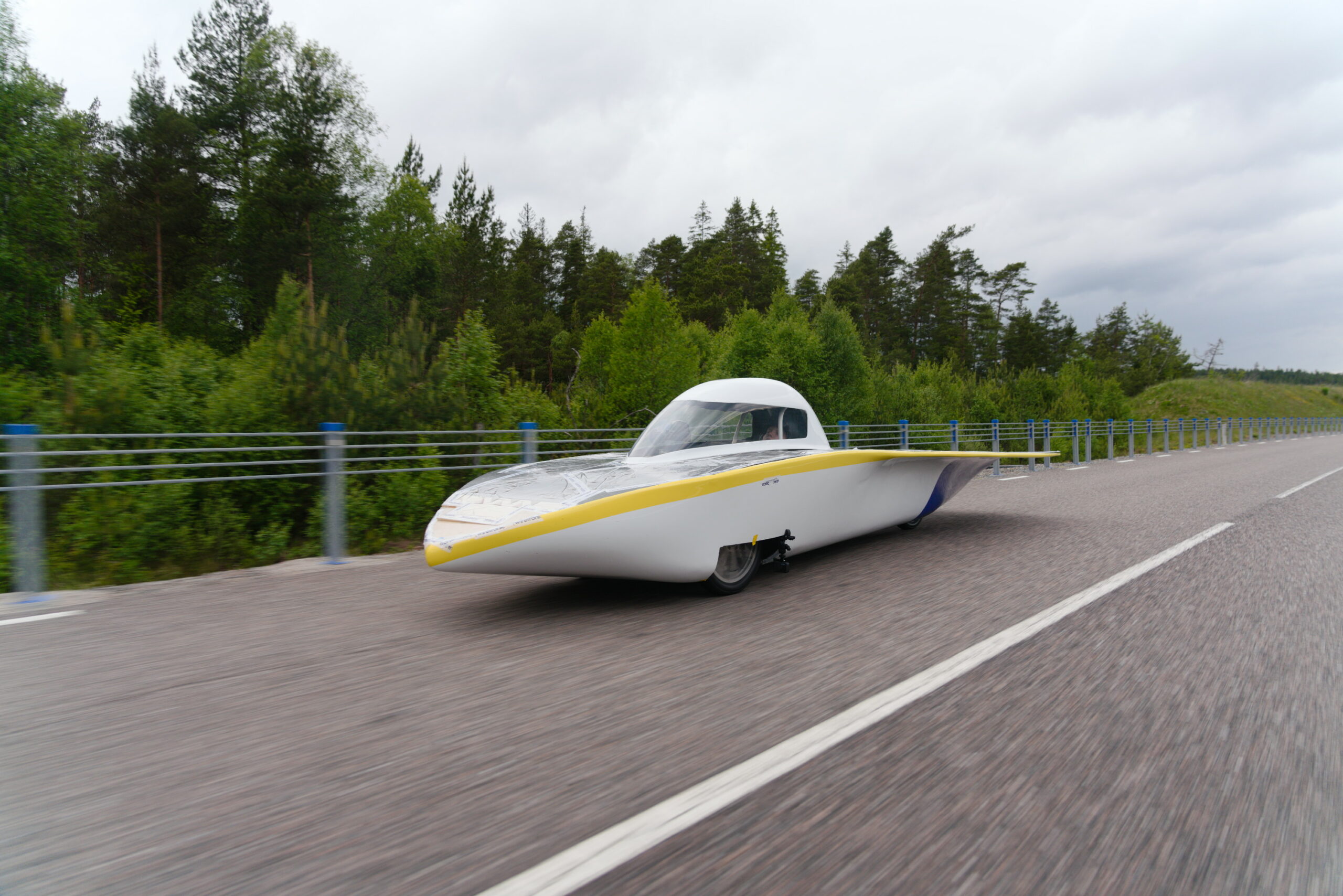
Building the aersoshell
Just like its predecessor, Arvaker is also made of carbon fiber. Specifically, the aeroshell, solar plane and canopy are constructed with a sandwich structure, with carbon fibre from Textreme on both the outer and inner layers, surrounding a lightweight foam core supplied by Diab. This time, the aeroshell features a sharper nose and a more streamlined canopy for improved aerodynamics compared to Allsvinn.
Arvaker focuses on minimizing weight, which is why it does not have a steel frame like Allsvinn. Instead it uses an occupant cell which also is made entirely of carbon fiber. Lastly, the solar plane has been cut out for improved cooling of the solar cells and reduce weight.
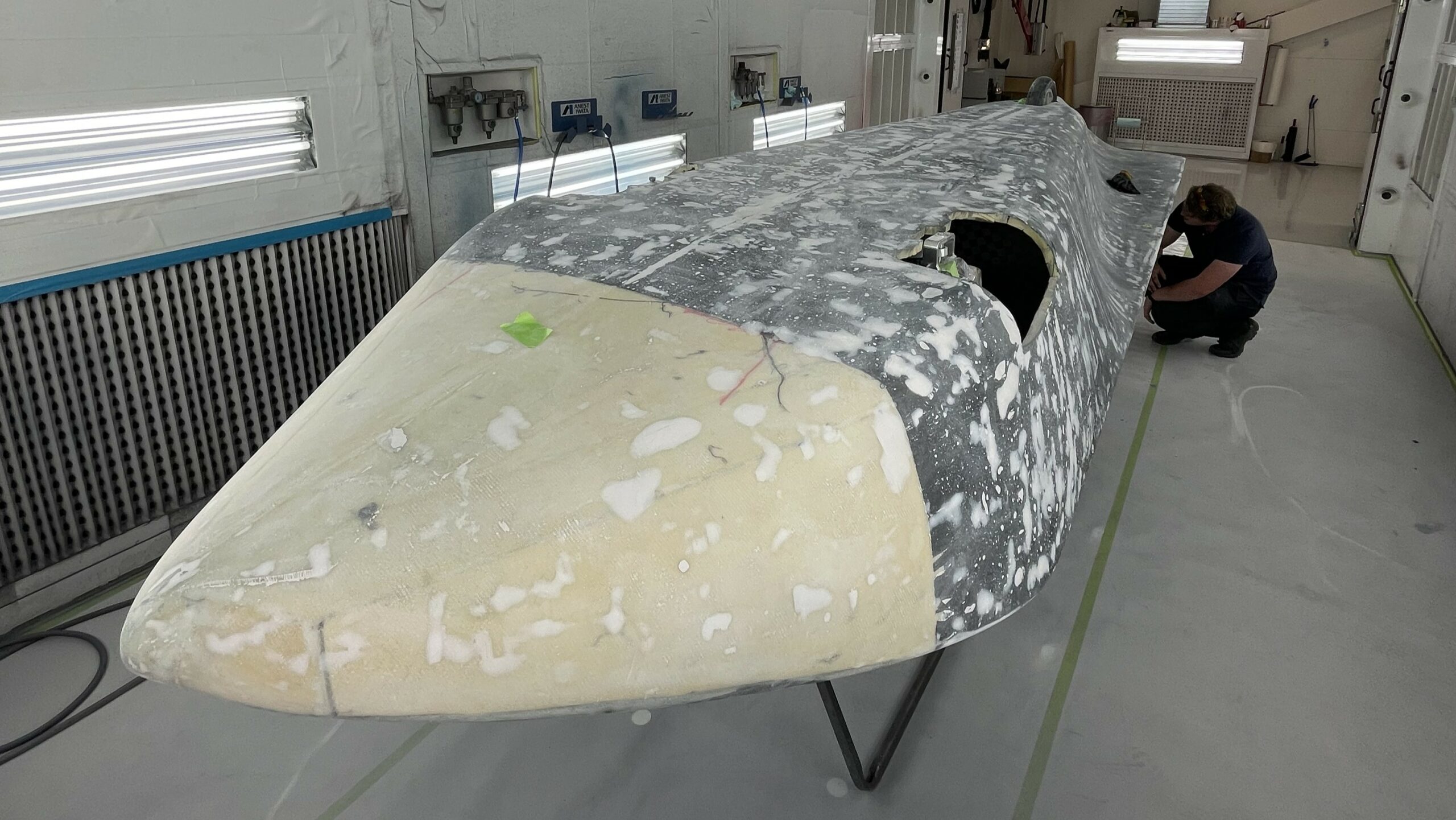

Mechanical Redesign for Lightweight Performance
The biggest change in the mechanical system is the material of the ocupant cell, which have been changed from steel to carbon fibre. This reduced the weight while maintaining sufficient strength.
Other components, such as the hinges and suspension, have been improved but remain similar in design to those in Allsvinn. however, they had to be adapted to the new method of mounting onto the carbon fibre occupant cell. The solution was to design and manufacture custom mounting brackets, which are used together with integrated inserts in the composite structure.
Another change is the addition of wheel hatches for the front wheels, allowing for a slimmer aeroshell. When the wheels need to turn beyond a certain angle, the hatches open outward to provide additional clearance.

Developing Arvaker’s Electrical System
In Allsvinn, the car used two battery packs connected to a junction box, which housed most of the car’s electronics. In contrast, Arvaker features a single modular battery pack made up of four smaller batteries connected together. This modular design makes the system more practical, safer and easier to work with, especially in the event of damage and maintenance. Due to rule Changes the battery pack is smaller in capacity.
The main goal of the high voltage system in Arvaker is to improve safety, useability and repairability, while also increasing overall reliability compared to Allsvinn. In this iteration, less emphasis has been placed on energy efficiency and weight, in favor of electrical robustness and serviceability.
Upgradig the solar array
The most significant upgrade from Allsvinn is the solar plane. While Allsvinn operated with an efficiency of 18%, Arvaker achieves nearly 25%. In addition, due to rule changes in Bridgestone World Solar Challenge, Arvaker’s solar plane is 50% larger than Allsvinn’s. Due to the larger solar plane and a smaller battery pack it is important to have an efficient solar plane even more so than Before, hence the upgrade.
Arvaker has generation 7 solar cells made by Maxeon Solar Technologies while Allsvinn has generation 3 solar cells. For this car, the lamination is provided by Mito Solar and the system is equipped with new MPPTs (Maximum Power Point Trackers) from TPEE, replacing the Drivetek MPPTs used in Allsvinn.


